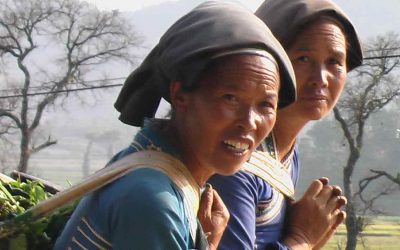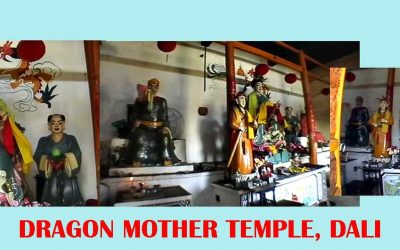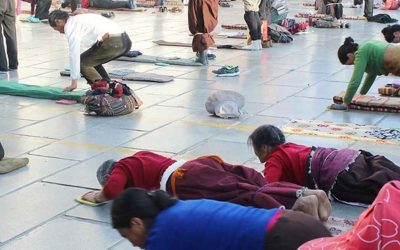Tibetans, the people who descend from the monkey
According to an ancient myth, the Tibetans originated from the union of an ogress (raksasi) and a monkey. The monkey was sent by Avalokitesvara, Mother Buddha, to sow the seed of Buddhism in these lands.
One day, an ogress approached the monkey and tried to tempt him to marry her. At first the monkey refused, but the ogress continued:
«If you do not marry me, I will become the wife of a devil and give birth to countless children and grandchildren. In future times this plateau will become a world full of devils and thousands of people will be killed. So please do as I have told you.»
Full of doubts, the monkey consulted Avalokitesvara on how he should act, who replied that such a marriage was his destiny and a good deed for Tibet. So they finally married and had five children who learned to speak, lost their tails and became the ancestors of the Tibetan people.
This story is very popular in Tibet, found in myths, legends and wall paintings. Its reflection has remained forever in toponymy, for the name Tsetang, the place where its kings are said to have originated and its most ancient spiritual center, means in Tibetan «the place where monkeys play».
It is curious to note that long before Charles Darwin formulated his theories of evolution in which it is affirmed that man descends from the monkey, in some lands the intuition of this phenomenon already existed.
Last posts
Zhuang Nationality in Wenshan Prefecture of Yunnan
Zhuang Nationality in Wenshan Prefecture Wenshan Zhuang and Miao Autonomous Prefecture lies in the eastern section of Yunnan Province. Scarcely visited by local and international tourists with populations not considered of enough interest by the academic world, is one...
History of the Zhuang nationality in China
History of the Zhuang nationality in China It is widely thought that the ancestors of the Zhuang were the ancient Yue. But there are no unanimity about the character, history and territory of these Yue. One people called “Yue” appears in the Chinese chronicles of the...
The Interpretation of the Dreams among the Hani
The Interpretation of the Dreams among the Hani As a general rule dream interpretation in China has followed a symbolic line, attributing to the memories of experiences lived during the dream a value related, sometimes not so clearly in a first analysis, to the values...
Temple to the Mother of the Dragon of the Bai
Temple to the Mother of the Dragon of the Bai Everyone who visits the ancient city of Dali goes to see the famous Three Pagodas, as it is one of the most famous monuments of the city and all of Yunnan, but very few know that right in the village next door, just 100...
Unconventional languages used by the Jinuo
Unconventional languages used by the Jinuo Not having a writing system, the Jino developed several systems of signs that covered communication in different situations: from the wooden gates in the mountain paths that warn of danger, to the daliu to expel demons, the...
Ritual prostrations of Tibetan pilgrims
Ritual prostrations of Tibetan pilgrims The end of the path of any pilgrimage is a temple or mountain considered the abode of the gods. Reaching it is the culmination of the journey. At that moment the pilgrims, in spiritual bliss, pay homage to the gods in two ways:...









